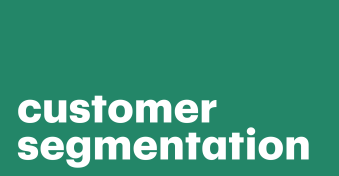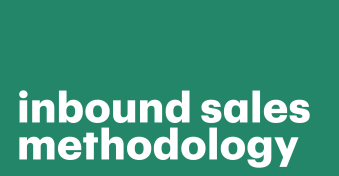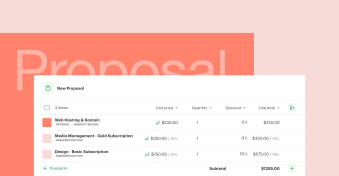LinkedIn has become the world’s standard professional network.
There are more than 200 million LinkedIn users in the US alone.
But despite being ever-present and necessary for career development, it’s surprising how many profiles don’t receive passing grades.
LinkedIn is a tool for career advancement.
It’s also great for prospecting. Learn to optimize your LinkedIn profile, and it can become an excellent resource for finding both potential employers and potential customers.
In this article, we will provide you with the LinkedIn profile tips and tricks that will sharpen yours until it’s a samurai sword ready to slice through pain points, objections, and the doubts of prospects or potential employers.
Key takeaways:
- Your LinkedIn profile can help you reach your desired audience and encourage them to reach out to you.
- The best LinkedIn users get endorsements, post regular content, and stay active.
- Most mistakes people make on their LinkedIn profiles stem from them treating the platform too much like other (non-professional) social networks.
- Optimizing your LinkedIn profile should be a continuous process which involves everything from your URL and images on your profile to effectively displaying your core skills.
What is a LinkedIn profile?
LinkedIn is like the Facebook of the professional world.
It’s a space where freelancers, content creators, salespeople, marketers, managers, and executives can reach out to one another and network.
Your LinkedIn profile is where you sell yourself to other professionals and prospects.
On the surface, LinkedIn profiles share relevant facts and details such as job skills, qualifications, professional experience, and accomplishments.
In this way, many people view a LinkedIn profile simply as a digital resume or CV. This is a massive oversight.
On the professional networking platform, you can have a virtual space (much like a website) to host your personal brand. It’s another channel to sell your message to prospects.
In other words, if you put in the work, your LinkedIn profile will help you reach your intended audience and beckon them to take action.
What makes a good LinkedIn profile
If you know how to write a CV, then you know a LinkedIn profile starts with the basics.
Profile photo
Earlier, we compared LinkedIn to another famous social networking site.
While there are many parallels, the profile pic isn’t one of them.
The first thing recruiters and prospects will see is your photo.
So that means you want it to be professional-looking with a clear view of your face. How else will people recognize you when things progress further?
Hire a pro or get some help from a colleague.
Even a smartphone will do as long as it’s a clean headshot of you wearing appropriate attire. No sombreros.
Headline
Sales professionals know all about the power of a headline.
Use the profile headline to your advantage and get the most relevant message across to your audience.
However, don’t oversell with pushy ‘sales talk’ and gimmicky buzzwords.
As this is the first information someone will read besides your name, you want to begin with the highest-priority details.
A job title like Marketing Manager or Copywriter is a good place to start. Next, consider adding more about your past experience and current job.
An example would be something like “Writing Converting Copy.” You also list hard skills like “Account Management” or “B2B Software Sales” in your header.
Keep it straightforward and pointed at your intended targets.
Create an ‘About’ section
The “About” section may technically be optional during profile creation, but it’s mandatory if you want a good one!
Use this space to write a summary selling your unique skills and experience to industry leaders, peers, and prospects.
Don’t exaggerate or use hyperbole. Keep everything fully authentic. Share the accomplishments you’re most proud of.
This is also a good place to mention where you see your career (or the industry) going and what’s up next.
Add all relevant work experience and job skills
Prospective employers will always want to know where else you’ve worked and in what roles.
Add detailed information for every relevant job you’ve had.
This includes job titles, companies, employment dates, and achievements.
Talk about projects you led, goals you reached, and KPIs you hit.
Don’t skip work experience that seems “below” where you are now.
Even that stint you did in Admin and Sales Support has crossover into your current and future network.
You can choose up to 50 skills on LinkedIn.
Start with adding the ones that most fit your current or desired job title and use the work experience section to back them up.
How to build a great LinkedIn profile
Once you’ve built yourself a “good” LinkedIn profile, it’s time to level it up.
1. Reach out and get endorsements
The basics of your profile, like your work experience and skills, act like lead magnets for your prospects.
If you utilize these elements correctly, they will drive up your profile views. A good way to stop visitors from hitting that back button is to boost your profile with endorsements.
Before you start hunting for these, ensure you have at least 50 connections in your LinkedIn network, as this forms the basis of your potential endorsement pool.
Contact employers, managers, customers, and other people you’ve worked with previously.
If they approve, you will have social proof in the form of user-verified job performance and industry-related skills.
2. Post new content
An easy way to demonstrate your value proposition as a sales professional is by creating useful content.
ou can write on topics like leadership, marketing, or other areas of expertise. You can even post links to videos or presentations that you’ve created.
This will help expand your network and widen your net on the platform.
The time you spend curating original content will build a reputation as a thought leader in your niche.
These types of organic LinkedIn content for the entire funnel can bring in new prospects.
However, it’s not only about creating original content.
You can get many of the same opportunities by simply sharing useful and engaging content.
3. Be active, and stay active
Creating original material and sharing content from elsewhere shows people on LinkedIn that you are an active user.
This is a key area for many recruiters and prospects as they know you are much more likely to respond quickly to inquiries.
Besides logging in to the platform to share content, spend time with what those in your network are discussing.
Participating in the shared content of others boosts your activity levels.
Just as importantly, it puts you in contact with subject-matter experts and industry leaders you wouldn’t cross paths with otherwise.
4. Curate your network
Think of your LinkedIn profile as a vegetable garden.
Sure, you could throw endless seeds in some topsoil and aim for quantity above all else. However, when it comes to leads, you know it’s quality that really matters.
Curate your networking garden in a way that nurtures the best prospect types and is tailored to your target audience.
The best way to do this is to start building connections with work colleagues and professionals in your industry and/or market.
For example, if you’re a Marketing Manager, you don’t want to start building a surplus of IT and Web Development connections in your network.
This could make it look like you’re seeking a career change.
The 4 biggest mistakes people make on their LinkedIn profiles
You want your LinkedIn profile to represent your personal brand clearly and reach specific audience segments.
We’ve already given you foundational tips to get you on your way to networking like Mark Zuckerberg.
Unfortunately, even the LinkedIn-literate can’t help but create detractions or overshoot the target. Here are some traps to avoid.
1. Confusing LinkedIn with Pokemon Go
For some reason, sales pros seem to think they need to ‘catch ’em all’ on LinkedIn.
Let’s clarify something… you don’t need to connect with people on LinkedIn to use it as a prospecting tool.
Connecting with random strangers is a good way to get yourself banned on LinkedIn.
Do you know what happens when you send a connection request?
LinkedIn conveniently offers the recipient an option to say, “I don’t know this creeper.” And guess what? Lots of folks will take LinkedIn up on their offer to out you as a random connection hoarder.
Only connect with people that you know professionally, or you risk having your account shut down.
Use InMail if prospecting is a core part of your job, or use LinkedIn as a research tool, followed up by outbound emails.
2. Posting memes and/or political propaganda
Here’s the rule of thumb for LinkedIn content: sharing it must provide value to the audience.
On LinkedIn, your audience is made up of professionals. They’re likely to be your colleagues, superiors, subordinates, clients, prospects, industry peers, etc.
Now, consider whether you would send them an email (from your work address) with whatever content it is that you’re about to share on LinkedIn.
Memes related to your industry or role might be humorous.
Some people might find value in that work-related humor. But, you run the risk of looking like a goofball who doesn’t know how to present themselves as a serious professional.
Political content is a big no-no due to its controversiality.
Even if you’re commenting on someone else’s article, it’s possible for your comment to show up in your connections’ news feeds as a news item.
If you want to see the lowest common denominator, check out the comments section on any political article posted on LinkedIn.
Don’t associate yourself with that type of crowd because you’ll likely alienate yourself from your connections.
3. Messing up the headline
This one is especially detrimental to sales professionals or anyone in a sales-related function.
The headline is how you present your professional identity to the world.
For some reason, there’s been a trend toward listing all of your alleged skills or functions:
BIZ DEV | SALES OPS | CRM | COACHING | PROSPECTING | NEGOTIATIONS
Doesn’t that look strange? We know with 99% certainty that you are not an expert in all of those things…so why are you just listing off sales-related skills?
Also, avoid the overuse of nonstandard characters:
☐☐※※※※ ☑☑☑ SALES EXEC WITH 10YRS OF EXPERIENCE ☑☑☑ ※※※※☐☐
Yikes…so spammy! Write your headline with proper grammar, spelling, and formatting.
Be clear and accurate in your self-description.
Don’t overinflate your role. Don’t use trite buzzwords like ninja, hacker, or guru.
For example, if you are a junior account executive, it’s probably not a great idea for your headline to read:
VISIONARY SALES LEADER AND LEAD HACKING GURU. (Yuck.)
When your headline is incongruous with your current job title, it says that you’re not living on the same plane of reality as everyone else.
If you become what you aspire to be, you won’t need a LinkedIn headline to tell people that’s who you are.
The same logic applies to anyone who describes themselves as a thought leader. Just… no.
4. Wearing your sunglasses
Like it or not, the first impression you make will color people’s perception of you.
It’s also true concerning your LinkedIn profile photo, too.
It communicates a lot about you without actually saying anything.
It’s not the place for your wedding photo (yes, we can tell even if it’s cropped), duck lips selfie, or sunglasses-margarita-I’m-on-a-boat vacation photo.
Consider your attire, too. Don’t wear something that you wouldn’t wear to a professional event, even if your particular office dress code is totes cool with you showing off your hard-earned guns in a tank top.
For sales reps, LinkedIn is a chance to build a network and your reputation.
Be wise in how you present yourself so that you can get the most out of the platform.
Err on the side of caution with your behavior and presence on the platform, and don’t underestimate the role that your LinkedIn profile will play in how people perceive your professional identity.
How to optimize a LinkedIn profile
When you have a great profile, you will pull in better leads and interest from quality opportunities.
But that doesn’t mean you can’t do even more! Use these LinkedIn profile optimization tips to fine-tune yours even further.
Create a custom profile URL
When you first create a LinkedIn account, you are assigned a URL link. This hyperlink is where your public profile is viewed.
Even if it has your name, it will likely have a bunch of random numbers and letters too.
Go to “Edit your customer URL” when viewing your profile, and make it easy for people by using your full name (if it’s available).
You can add a memorable number to the end if necessary. This even helps with SEO in case someone Googles your name.
You can even take a different approach with something like “California-SaaS-Sales-Leader.”
The bottom line is that you can drive increased organic traffic to your profile if a fitting URL is available.
Use the features section
A lot of people don’t know about or ignore the “Features” section of their LinkedIn profile.
You can optimize the profile experience for visitors by making use of this underused box.
The Features section works similarly to many widgets on website builders like WordPress or Wix.
It lets you link to written or other shared content directly from your profile page. In a way, it’s like a mini-portfolio.
Each link comes with a featured image, header, and text summary.
Especially useful if you’re a freelancer, Features help you stand out from the crowd by directing prospects to your work.
Optimize your skills
The foundation of a good LinkedIn profile has all of your valuable skills on display.
Regardless of your roles, you will likely have a dozen or more listed on your profile. You can pin three of these to your profile header.
Your top-three job skills should be chosen carefully.
Go for keywords that are most likely to appear in LinkedIn searches. Prioritizing hard skills like “Deal Closing” over soft skills like “Teamwork” is a must.
Add a background image
Once you have a professional-looking profile headshot, you can add another layer of your personal brand by using a background image.
This will appear in the header of your LinkedIn profile and enhance the elevator pitch of your page.
Use a customized background image that features your branding colors and logo.
You can also use this space to add an additional marketing message, further selling your services.
For example, a freelance copywriter could add an image of their home office in the background.
Going a step further, they could add a message like “Sales Copy for SaaS” in a branded font.
Rank among the best LinkedIn profiles with these tips and tricks
LinkedIn is a valuable tool for sales and marketing professionals.
But just signing up for the platform isn’t enough on its own.
Savvy LinkedIn profile management can help you rise to the top of profile searches by creating a thoughtful and purposeful virtual space.
Start with the basics, like a professional profile headshot and detailed work experience.
Then take your LinkedIn profile to the next level by adding personality with an About section and professional endorsements.
Lastly, move on to fine-tuning your profile with steps such as creating a custom profile URL and adding a background header image.
Once you build a star LinkedIn profile, you will find better opportunities and greater success.
Disclaimer
PandaDoc is not a law firm, or a substitute for an attorney or law firm. This page is not intended to and does not provide legal advice. Should you have legal questions on the validity of e-signatures or digital signatures and the enforceability thereof, please consult with an attorney or law firm. Use of PandaDocs services are governed by our Terms of Use and Privacy Policy.
Originally published February 12, 2018, updated August 9, 2023


